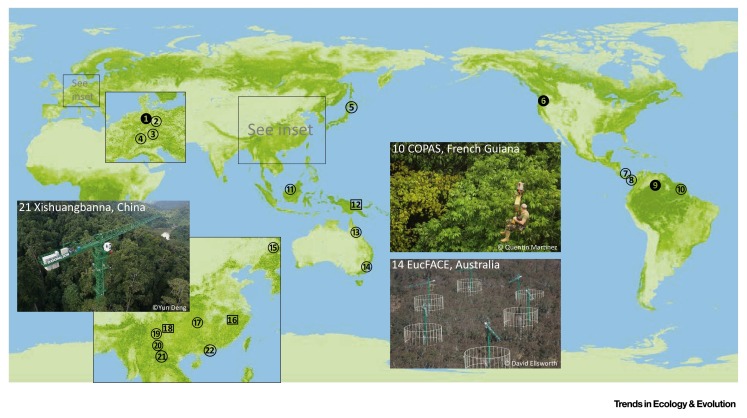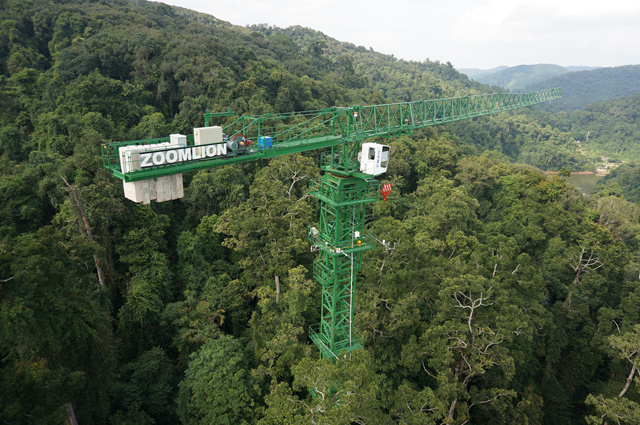Forest canopies (i.e. the upper layers or aboveground zone of vegetation, generally formed by tree crowns) are hotspots of biological diversity, engines of global biochemical processes, and the dynamic interface between organic nature and the atmosphere. It plays an essential role in obtaining a clear picture of biodiversity and forest ecosystem function. However, the current knowledge of forest functioning is heavily biased towards the understory.
Dr. Akihiro Nakamura of Xishuangbanna Tropical Botanical Garden (XTBG) and his collaborators reviewed how progress (or lack thereof) in canopy-specific or canopy-inclusive studies would contribute to the understanding of the ecology and conservation of forests.
They particularly emphasized on forest microclimate, species biodiversity and interactions, and biogeochemical processes.
The researchers consulted a large amount of literature and conducted field investigations. They explored how the forest canopy, with the aid of new technologies, experimental approaches, and a global canopy crane (i.e. a construction tower crane built in forested areas to gain access to the canopy stratum) network can be integrated into forest ecology.
The researchers found that the forest canopy remains under threat from multiple human drivers, as does its resilience and resistance to change. The medium- and long-term implications of anthropogenic change which has shifted from local to global scales for canopy biodiversity, ecosystem function, and resilience are little understood.
They further found that the forest canopy is no longer ‘the last biological frontier’, with increased access through the expansion of infrastructure, and new technologies for the description and manipulation of diversity and function.
The researchers regard that more emphasis is needed on studying the canopy at fine vertical resolution. Although current understanding on forest canopies remains limited, it is clear that forest canopies are unique zones of biodiversity. Loss of forest canopies undermines global water and carbon cycle security and leads to biodiversity loss.
They propose that more multilateral and collaborative research effort should be directed towards forest canopies. A global system of large-scale, versatile canopy access facilities is necessary and emerging.
The study entitled “Forests and Their Canopies: Achievements and Horizons in Canopy Science” has been published online in Trends in Ecology and Evolution.
Contact
Akihiro Nakamura Ph.D
Key Laboratory of Tropical Forest Ecology, Xishuangbanna Tropical Botanical Garden, Chinese Academy of Sciences, Mengla, Yunnan 666303, China
E-mail: a.nakamura@xtbg.ac.cn
World Map Showing the Locations of Canopy Access Facilities.
(Image by Akihiro Nakamura )
Canopy crane at 20-ha Xishuangbanna plot.
(Image by XTBG)


